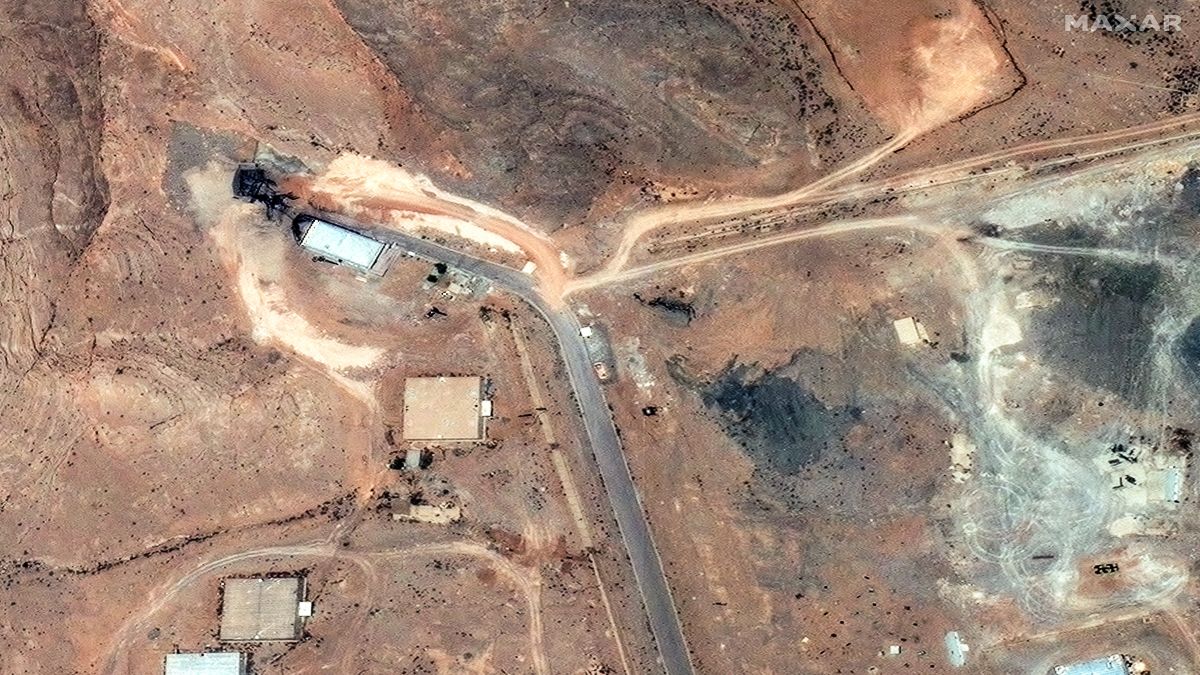While there is no clarity about the whereabouts of Iran’s highly enriched uranium, an expert has explained how Iran could have moved it out of nuclear sites attacked by the United States last week.
Iran was understood to have stored 60 per cent highly-enriched uranium at Isfahan and Fordow nuclear sites that the United States struck last month. The Fordow site was struck by 30,000-pound 'bunker buster' bombs and Isfahan was hit with submarine-launched Tomahawk missiles.
While the Donald Trump administration has maintained that US strikes obliterated these sites , independent analysts have said that the US strikes imposed significant but not irreversible damage. There are also signs that the uranium stockpile to the tune of 440 kilograms was not destroyed.
Even though the relocation of radioactive highly enriched uranium appears difficult, it is quite simple as such uranium is in gas form of uranium hexafluoride and can be transported in cylinders in trucks, Daryl G Kimball, the Director of Arms Control Association, told Fox News’ Jennifer Griffin.
Satellite imagery has shown several trucks lined up at the Fordow nuclear site in the days leading to US strikes. Observers have said that those trucks could have been used to transport uranium out of the site before the US strikes. Such an assessment is backed by the fact that no radioactive contamination was detected after strikes at Fordow, suggesting that either the site had no uranium or US bombs did not hit any uranium there.
Impact Shorts
More ShortsExpert explains how Iran could’ve moved uranium
Kimball said that highly enriched uranium in gaseous form is highly mobile and can be transported in cylinders that might look like a water heater in a house or a scuba tank.
As the stockpile was just 440 kgs, it could therefore be moved in 40-50 cylinders in two-three trucks.
“It doesn’t require that many vehicles to move it. There’s no radiation that’s leaking that requires special protection. There has to be protection. So it is not that difficult to move,” Kimball told Fox Chief National Security Correspondent Griffin.
Kimball agreed with analysts who have said that the Isfahan site is unlikely to have been destroyed by Tomahawk missiles. He said that the evidence suggests that Iranians indeed moved the uranium out of sites that Israel and United States struck.
“The Iranians had notified just before the Israeli military action that if attacked, they would take the uranium enriched at 60 per cent, the 440 kilograms, out of the facilities and move it somewhere else. I think we have to assume they’ve done that. They were planning for these strikes. It may be the case that Israeli intelligence thinks it knows where Iran took this. I’m actually doubtful, but you never know. But most likely they have moved it. And the IAEA has said they don’t know where it is. JD Vance said the United States does not know where it is. So that’s a problem,” said Kimball.
Does it mean US strikes failed? Not that simple
Iran’s relocation of uranium does not mean that US and Israeli strikes failed at not all components needed to make nuclear bombs were likely relocated.
The uranium that Iran likely relocated was just 60 per cent enriched whereas it takes around 90 per cent enriched uranium to make a nuclear bomb. Iran needs centrifuges to further enrich any uranium to weapons-grade level of 90 per cent. It’s unlikely that Iran managed to save centrifuges like uranium stockpile.
Kimball said, “It is very difficult to power down, package up the centrifuge machines. So it’s unlikely that Iran was able to salvage workable centrifuge machines before the strikes from Natanz and Fordow.”
However, even that is not an irremovable obstacle in the way of Iran making a nuclear weapon if it decides to.
“The bottom line is that the Iranians likely have residual capabilities either in undisclosed sites and they have centrifuge workshops that can reassemble or rebuild these machines. And, if uninterrupted, eventually they can —if they want to— reconstitute a large portion of what was destroyed in these strikes. So, as I said, the strikes can set back the programme, it cannot eliminate it completely,” said Kimball.


)

)
)
)
)
)
)
)
)



